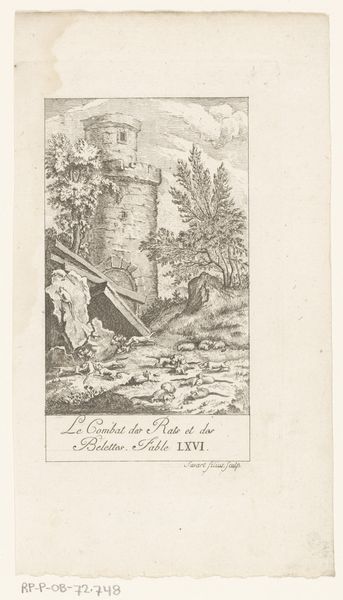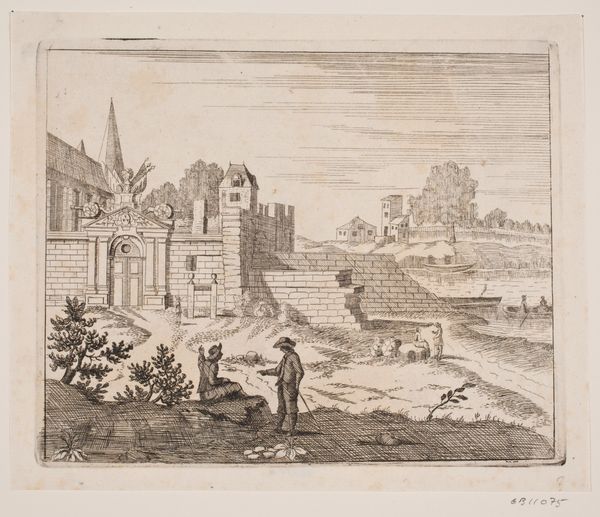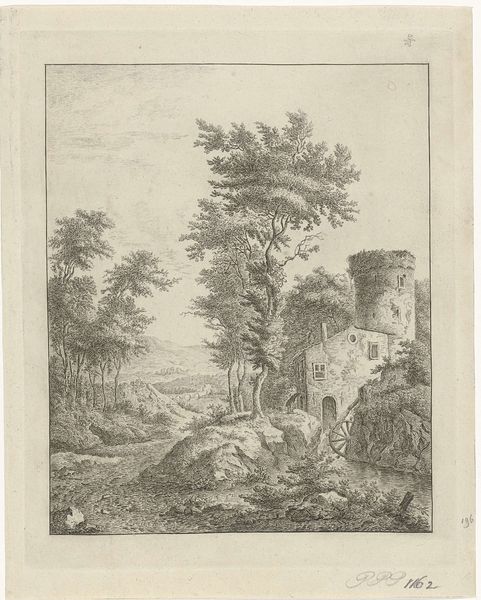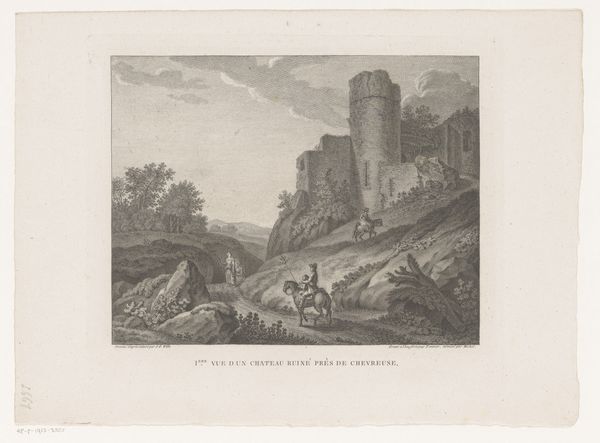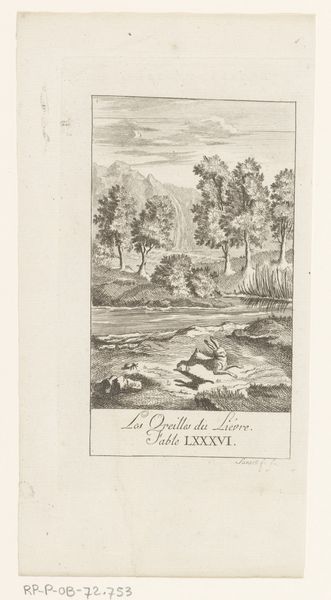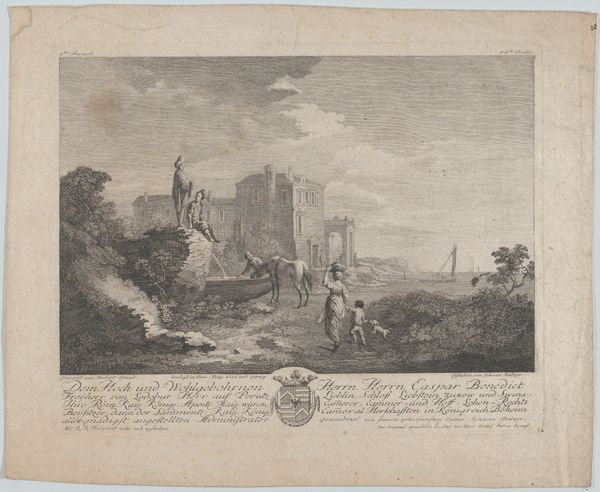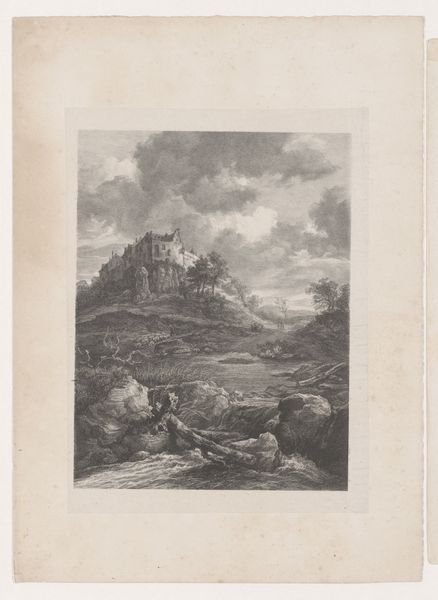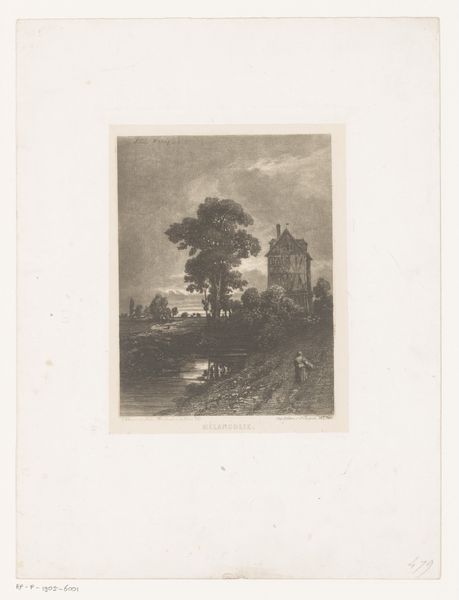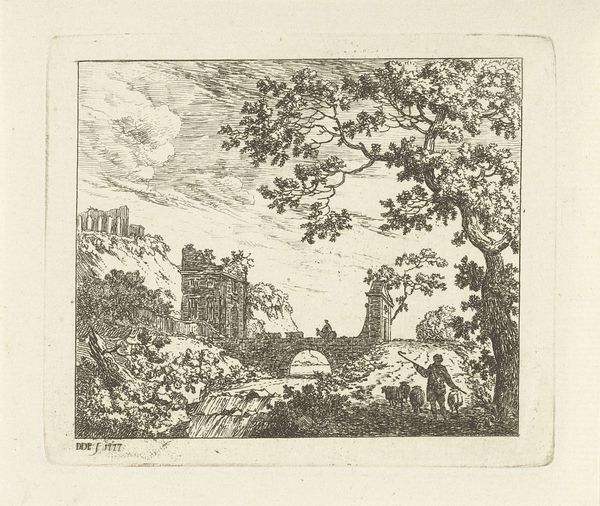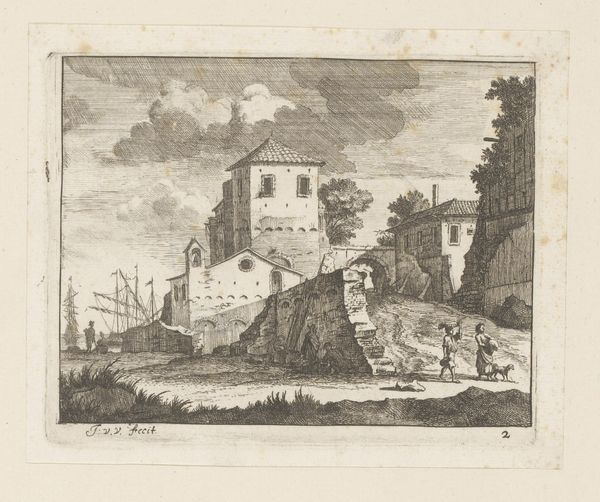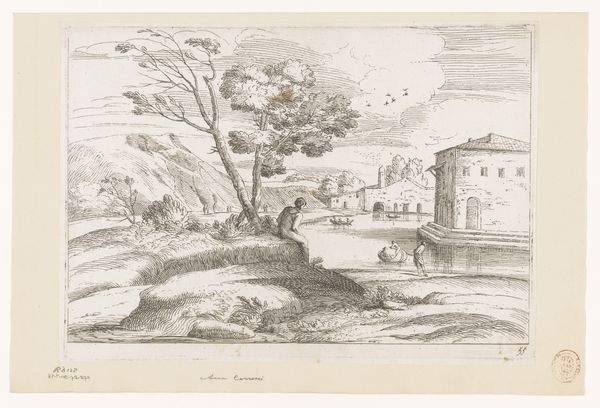
drawing, print, etching, paper, engraving
#
drawing
#
ink paper printed
# print
#
etching
#
landscape
#
paper
#
genre-painting
#
history-painting
#
engraving
#
rococo
Dimensions: height 142 mm, width 81 mm
Copyright: Rijks Museum: Open Domain
Editor: Here we have Johann Heinrich Meil's "Fable of the Ape and the Dolphin," made in 1758. It's an etching on paper, a fairly small print. I'm immediately struck by the starkness of the landscape, with this imposing tower in the background contrasting with what looks like…a battlefield? What do you see in this piece? Curator: What immediately grabs my attention is the labor inherent in its production. Look at the lines – each one carefully etched into the plate. Consider the social context of printmaking at the time. These images, these "fables," were a form of currency, reproduced and distributed widely. What kind of statement is the artist making, and what was the culture of consumption for this work? Editor: So you are saying it’s more than just a pretty picture? Curator: Precisely. This print is not just about the scene itself – it's about the entire process: the artist's labor, the engraver’s skill, the materiality of the ink and paper. The content appears to represent conflict, but this conflicts in a printed scene – not in an original canvas. And don’t forget how accessible and portable prints were – like sharing opinions in our digital age. Editor: That makes me see the work very differently! It's not just an isolated artwork; it's part of a larger network of production, distribution, and even consumption. Curator: Exactly. We must consider art as an active part of a broader social system – challenging the notion of unique artistic expression. The means of its creation informs its purpose and influence. Editor: So, focusing on the 'how' rather than just the 'what' gives us a richer understanding. Thanks, that’s changed my view quite a bit!
Comments
No comments
Be the first to comment and join the conversation on the ultimate creative platform.
